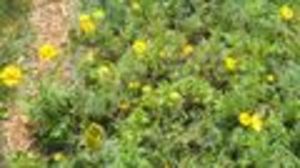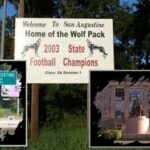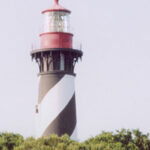As I walked through my neighborhood on this fine Spring morning, I saw turf lawns of lush, green St. Augustine grass next to front yards that had turned into sand piles. And I thought, “The grass-growers are breaking the laws of both common sense and our county. The sandy-yard folks have a great opportunity but are probably wracked with ugly-yard guilt that they don’t know what to do about.” You know why those yards are sandy? Our community is built on a upland sand flat. They’re supposed to be sandy! Those who drain both the aquifer and their wallets to grow grass are, in their heads, living in England where the cool, damp climate supports grassy lawns or in some idealized loamy-soiled suburbia in Virginia. People, I thought, we’re in central Florida – wake up!
Mid-April, 2009. Message to Florida homeowners.
As you consider your Spring gardening, focus your awareness on your yard’s soil, the current weather cycle, legal considerations (watering restrictions) – and how those affect your sense of what is a “beautiful” yard. Be here now.
Be … aware that beauty in nature has a strong functional component. Flowering plants develop “beauty” in order to attract the insects that pollinate them. Function: survival.
Here … in Florida, where most soil is sandy and we’re in the midst of a long drought, not near the end of the cycle. What is your yard’s current condition? Patchy or entirely bare of grass? Awful? No … opportunity! New sod will require a lot of watering, which is probably (here and now) both expensive and illegal. This is the place where you can create a functionally beautiful landscape with Florida’s native, sandy-soil loving, drought-hardy plants.
Now … in an economic recession and on the verge of a climate crisis, we have an opportunity to build a nature-friendly landscape that will also save us time and money in the future. We need to be gentle to our economic and natural resources right now, preferably in ways that will continue to benefit us for decades to come. Fortunately, this is an easy harmony to achieve with sustainable and beautiful solutions.
Xeriscaping is the solution
What is xeriscaping? The word xeriscape combines the Greek word for dry (xeros) and landscape. Xeriscaping, then, is an approach to gardening that eliminates the need for supplemental irrigation beyond what nature provides in your specific area. The emphasis is on plants that naturally require no more water than local rainfall provides, and gardeners use mulch and ground covers to avoid losing water to evaporation and run-off. Most watering is usually done with drip irrigation.
How do you find plants that will thrive in your yard? Use the resources listed at the end of this article to find ground covers can replace grass and plants that will survive in sandy soil and in both sunny and shady areas. You’ll reap the benefits for many years while increasing the value of your house. The planting principles that can help you xeriscape your yard are an easy read in the Southwest Florida Water Management District, “Waterwise Florida Landscapes” document. The few hours of time you invest now in reading and shopping at your local nursery will buy you many hours of time no longer wasted on mowing and many dollars no longer wasted on lawn services and watering. Hardy plants are pest-resistant, too, so you’ll have to buy fewer chemicals to treat your garden.
You’ll be kind to your wallet and your time while going green for the benefit of the planet – “doing well while doing good,” as an entrepreneur once said. Good for you!
Resources
Southwest Florida Water Management District, “Waterwise Florida Landscapes” – http://www.swfwmd.state.fl.us/publications/files/waterwise_landscapes.pdf – use the bookmarks panel peruse the Plant Lists tables, and read the preceding chapters for “how to” information on applying xeriscaping principles
University of Florida IFAS Extension – http://edis.ifas.ufl.edu/EP016 – scroll down to table 2: Florida ground covers






